PST Rotating Body Type — Technical Guide and Application Reference
Product summary: The PST Rotating Body Type is a one-touch pneumatic fitting engineered for fast, tool-free tubing connections in compressed-air systems. Featuring a rotating body to minimize hose twist, a compact hex-shaped (PC) profile for tight installations, and seal-coated threads to simplify assembly, the PST Rotating Body Type supports a broad range of tube sizes and thread standards for industrial and OEM pneumatic installations.
Introduction
Push-to-connect fittings have become a standard component of modern pneumatic systems due to their speed, reliability, and ease of installation. The PST Rotating Body Type advances this family of components by adding a rotating swivel body and a compact PC (hex-shaped) variant optimized for constrained mounting environments. This article provides a comprehensive technical overview of the PST Rotating Body Type, including specifications, material construction, performance characteristics, installation and maintenance practices, recommended use cases, and a comparative review against other fitting types.
Engineered for compressed air use across a wide set of industries—factory automation, robotics, packaging, material handling, and laboratory instrumentation—the PST Rotating Body Type reduces assembly time and tubing stress while delivering secure, leak-resistant connections for systems operating from vacuum up to 150 PSI (0–9.9 kgf/cm² / 0–990 kPa).
Technical Overview
The PST Rotating Body Type is a one-touch push-to-connect pneumatic fitting that secures tubing quickly by simple insertion and releases tubing by depressing a release sleeve and pulling the tubing out. The mechanism is based on a collet with integrated gripping teeth (stainless steel or spring-steel insert) and an elastomeric sealing element (standard NBR/Nitrile) that forms the pressure seal around the tubing OD. The fitting’s body includes a rotating section (swivel) which allows the connected tubing to be rotated relative to the threaded inlet body without transmitting torsional stress to the tubing or the joint. This reduces hose twist, improves routing flexibility, and simplifies final assembly alignment.
Key performance envelope:
- Intended medium: Compressed air only (standard product line)
- Operating pressure: 0 to 150 PSI (0 to 9.9 kgf/cm² / 0–990 kPa)
- Vacuum capability: down to -29.5 in Hg (-750 mm Hg / ~10 Torr)
- Operating temperature range: 32–140°F (0–60°C)
The PST Rotating Body Type is produced in multiple model variants to accommodate metric tubes (φD = 4, 6, 8, 10, 12, 16 mm) and inch-size tubing (5/32″, 3/16″, 1/4″, 5/16″, 3/8″, 1/2″). Thread options include R (PT) or BSPP-style threads for metric models and NPT threads for inch models. Threads are supplied with a factory-applied seal coating (equivalent to PTFE film or liquid sealant) to reduce the need for additional sealant and to standardize assembly torque recommendations.
How It Works — Functional Details
The PST Rotating Body Type is built around four functional subassemblies:
- Threaded inlet body: Machined metal (typically nickel-plated brass or nickel-plated zinc alloy) containing the thread, inlet port, and the interface to the swivel section. Threads are seal-coated for simplified installation and improved initial leak-tightness.
- Rotating/swivel section: A bearing-like interface that permits 360° rotation of the tube-facing portion relative to the inlet body while retaining full internal sealing. Rotation typically is free without significant torque, but small detent or friction control may be incorporated depending on model.
- Collet / release sleeve: The externally actuated sleeve (made from engineering polymer such as POM or reinforced nylon) surrounds the collet. When the sleeve is pushed inward the collet’s teeth retract, allowing the tube to be removed. When released, the collet protrudes and grips the tube.
- Seal (O-ring or multiple rings): Elastomeric seals (standard NBR) located inside the flow path guarantee gas tightness over the rated pressure and temperature range. Optional materials such as FKM (Viton) or EPDM may be offered for specific chemical compatibility or temperature needs.
Installation is tool-free for tubing insertion: push the tubing squarely into the fitting until it bottoms; the collet teeth engage and the seals compress to create a leak-tight joint. Disconnection is equally rapid: with system pressure relieved as required, press the sleeve toward the body and pull the tubing out. The typical connection or disconnection time is 1–2 seconds, which makes these fittings highly suitable for rapid assembly lines and field service interventions.
Specifications and Dimensions
The following table summarizes technical specifications across representative PST Rotating Body Type sizes and thread variants. Values are typical design ranges; consult product datasheets for precise, model-specific data.
| Model Code (example) | Tube Size (φD) | Thread | Max Pressure (PSI / kPa) | Vacuum Rating | Operating Temp (°F / °C) | Hex/Flat Width (mm) | Approx. Length (mm) | Weight (g) |
|---|---|---|---|---|---|---|---|---|
| PST 04-M5 | 4 mm | M5 x 0.8 | 150 PSI / 990 kPa | -29.5 in Hg | 32–140°F / 0–60°C | 8 mm | 28 mm | 6 g |
| PST 06-1/8 | 6 mm | 1/8″ NPT | 150 PSI / 990 kPa | -29.5 in Hg | 32–140°F / 0–60°C | 10 mm | 32 mm | 9 g |
| PST 08-1/4 | 8 mm | 1/4″ NPT | 150 PSI / 990 kPa | -29.5 in Hg | 32–140°F / 0–60°C | 11 mm | 36 mm | 14 g |
| PST 12-1/8 | 12 mm | 1/8″ NPT | 150 PSI / 990 kPa | -29.5 in Hg | 32–140°F / 0–60°C | 14 mm | 42 mm | 30 g |
| PST 1/4-N1 | 1/4″ (6.35 mm) | 1/4″ NPT | 150 PSI / 990 kPa | -29.5 in Hg | 32–140°F / 0–60°C | 11 mm | 36 mm | 15 g |
| PST 3/8-N2 | 3/8″ (9.5 mm) | 3/8″ NPT | 150 PSI / 990 kPa | -29.5 in Hg | 32–140°F / 0–60°C | 14 mm | 44 mm | 38 g |
Notes:
- Approximate length is measured from the thread face to the tubing insertion face and will vary by thread style and shoulder dimensions.
- Weight values are representative for nickel-plated brass or zinc-alloy bodies with polymer sleeves.
- Hex/flat widths indicate the PC (hex-shaped) variant’s wrench flats for tightening in cramped spaces.
Materials and Build Quality
Material selection for the PST Rotating Body Type balances durability, corrosion resistance, machinability, and cost. Typical materials and their rationale are described below.
| Component | Typical Material | Function / Benefit |
|---|---|---|
| Threaded inlet body | Nickel-plated brass or plated zinc alloy | Provides corrosion resistance, robust mechanical strength for threaded connections, and machinability for precise threads. Nickel plating increases surface hardness and wear resistance. |
| Rotating/swivel interface | Stainless steel inner washers + POM/nylon outer sleeve | Combination of low-friction polymer and stainless steel ensures smooth rotation and long life under cyclic rotation loads. |
| Collet / gripping teeth | Hardened stainless steel or spring steel insert | High tensile strength provides reliable tube retention and resistance to repeated insertion cycles. |
| Release sleeve | Glass-filled nylon or POM (acetal) | Durable, low-friction polymer for repeated manual actuation; resistant to impact and wear. |
| O-rings / seals | Nitrile (NBR); optional FKM / EPDM | Standard NBR offers good sealing for compressed air at ambient temperatures. FKM and EPDM options are available for improved chemical or temperature resistance. |
| Thread seal coating | Factory-applied PTFE-based coating or liquid sealant film | Provides initial leak resistance and simplifies assembly; consistent application prevents over-tightening and reduces assembly variability. |
The PST Rotating Body Type is manufactured with attention to tolerances on internal diameters, seal grooves, and collet geometry so that sealing and gripping performance remains consistent across tube materials (e.g., polyurethane, nylon, polyethylene) and sizes. Quality control typically includes pressure testing (leak checks) and functional cycle tests to validate the collet/sleeve mechanism through repeated operations.
Key Features
- One-touch push-to-connect: Rapid insertion and release of tubing—typically 1–2 seconds—without tools.
- Rotating swivel body: 360° relative rotation to minimize hose twist and improve routing flexibility during installation and operation.
- PC hex-shaped compact profile: Hex flats on the inner and outer surfaces facilitate piping in cramped or confined spaces where wrench access is limited.
- Seal-coated threads: Factory-applied thread sealant simplifies installation and reduces the need for additional sealant materials while delivering repeatable, leak-resistant assembly.
- Broad size range: Metric and inch series covering common industrial tubing diameters (φD = 4–16 mm; 5/32″–1/2″).
- Vacuum-capable: Usable down to -29.5 in Hg, enabling use in negative pressure applications within the stated limitations.
- Tool-free operation: Eliminates installation time for tubing terminations and simplifies field service.
- Material options: Standard NBR seals with upgrade options for higher chemical and temperature resistance (FKM, EPDM).
- Reliable retention: Hardened collet teeth and precision sealing ensure long-term leak-free performance under rated pressures.
Use Cases and Applications
The PST Rotating Body Type is designed to serve across a broad spectrum of pneumatic installations. Typical application areas include:
Factory automation and robotics
In automated assembly, pick-and-place, and robotic end-effector systems, reliable and compact pneumatic connections are essential. The rotating body prevents air hose twisting caused by actuator motion or robot articulation. The hex-shaped PC variant is particularly valuable in tight end-effector packaging where space is at a premium.
Packaging and material handling
High-speed packaging machines require frequent maintenance intervals; push-to-connect fittings greatly reduce downtime during tool changeovers and servicing. The ability to quickly reroute tubing without creating kinks or twists improves system uptime.
Conveyors and pneumatic actuation
Conveyor systems using air cylinders or grippers need multiple, often distributed, air distribution points. PST Rotating Body fittings simplify layout changes and field rework while supporting vacuum manifolds when needed.
Laboratory and test rigs
Low-volume and benchtop pneumatic systems used for component testing or instrumentation benefit from quick assembly and adjustability. The vacuum rating allows use with simple vacuum hold-downs or low-vacuum actuators.
Maintenance-of-way and OEM machine builds
OEM machine builders can incorporate PST Rotating Body fittings into their designs to offer end users simpler maintenance and to reduce assembly time on the factory floor. Their compact form factor and standard thread references make product integration straightforward.
Comparison: PST Rotating Body Type vs Other Fittings
The table below compares the PST Rotating Body Type to three common alternatives: (A) Fixed/standard one-touch push-to-connect (non-rotating), (B) Metal push-in straight fittings, and (C) Barb fittings with hose clamps. The comparison focuses on installation speed, tubing stress, compactness, leak performance, and suitability for automation environments.
| Attribute | PST Rotating Body Type | Standard Fixed One-Touch | Metal Push-In Straight | Barb + Clamp |
|---|---|---|---|---|
| Tool-free tube connection | Yes (one-touch) | Yes (one-touch) | Yes (some models) | No (requires clamp tool) |
| Rotating/swivel | Yes (360°) | No | Some models have swivel | No |
| Compact for tight spaces | High (PC hex profile available) | Medium | Low–Medium (larger bodies) | Low (hose and clamp require space) |
| Typical leak performance | Excellent when installed per spec | Excellent | Good–Excellent | Good (depends on clamp torque and technique) |
| Serviceability | Very high (fast disconnect/reconnect) | High | High | Low (requires tool and more disassembly) |
| Cost | Moderate | Moderate | Moderate–High | Low (part cost low, labor cost high) |
| Suitable for vacuum | Yes (to -29.5 in Hg) | Depends on model | Depends | Generally not recommended for deep vacuum |
| Best use case | Quick assembly with rotation, tight spaces | General purpose push-to-connect | High-pressure or harsh-environment metal fittings | Low-cost, static assemblies |
Overall, the PST Rotating Body Type is the preferred choice when routing flexibility, space-constrained installation, and rapid maintenance are priorities. Where extremely high temperatures or harsh chemical exposure are expected, alternative metal fittings with specialty seals may be more appropriate.
Benefits and Limitations
Benefits
- Speed and simplicity: Tool-free connections drastically reduce assembly and service times compared to clamped barbs or threaded adapters.
- Reduced tubing stress: The rotating body eliminates torsional stress and potential kinking that can shorten tubing life or cause leaks.
- Space optimization: The PC hex-shaped profile allows tightening and routing in compact environments where standard round fittings are difficult to manipulate.
- Consistent sealing: Factory-applied seal coating and precision seal grooves deliver reproducible leak performance.
- Versatility: Wide range of tubing sizes and thread standards supports multi-standard installations and simplifies inventory.
Limitations
- Compressed air only: The base product is intended for compressed air. Use with other gasses or liquids requires verification of seals and materials.
- Temperature range: Standard seal materials limit continuous operation to 0–60°C (32–140°F). High-temperature variants require FKM seals and validated housing materials.
- Pressure ceiling: Ratings stop at 150 PSI. Applications requiring higher pressures must use higher-rated fittings or metal push-in fittings designed for higher working pressures.
- Chemical compatibility: Nitrile seals are not compatible with certain oils, solvents, and aggressive chemicals. Verify compatibility or select optional seal materials.
- Not for permanent high-vibration joints without secondary support: Although retention is secure under normal pneumatic loads, extremely high vibration environments may benefit from additional mechanical support of tubing to prevent fretting wear.
Installation Best Practices
Proper installation ensures leak-free performance and maximizes the life of the fitting. Observe the following professional guidelines:
- Inspect components: Verify fittings and tubing are clean, free of burrs, chips, or foreign matter. Damaged tubing ends or debris can compromise seal performance.
- Cut tubing squarely: Use a precision tubing cutter to produce a square, smooth end face. Avoid angled or crushed cuts.
- Deburr and chamfer: For some tubing materials, a light chamfer may facilitate insertion and avoid damage to O-rings; however, excessive chamfering reduces sealing surface. Follow tubing manufacturer guidance.
- Insert fully: Push tubing into the fitting until it bottoms. Internal retention is dependent on full insertion depth.
- Thread installation: Threads are seal-coated at the factory. Start threads by hand to avoid cross-threading, then tighten to recommended torque. If additional sealant is used, ensure compatibility and do not over-apply to avoid contamination of the flow path.
- Torque recommendations (typical): Apply torque within the ranges below to avoid thread damage and ensure leak-tightness. These are model-level suggestions—consult product datasheets for exact values:
- M5: 0.8–1.5 Nm
- 1/8 NPT: 2.5–4.0 Nm
- 1/4 NPT: 3.5–6.0 Nm
- 3/8 NPT: 5.0–8.0 Nm
- 1/2 NPT: 7.0–12.0 Nm
- Support tubing: Use clamps, straps, or brackets near the fitting to reduce stress on the connection and protect against excessive vibration or shock loading.
- System pressure test: After installation, perform a pressure/leak test at working pressure and check for audible or measured leaks with a leak detector or soap solution.
Maintenance and Care Guide
Regular inspection and preventative maintenance will extend service life and reduce downtime. Follow these professional maintenance recommendations:
Routine inspection
- Inspect fittings quarterly in normal industrial environments; inspect monthly in critical or high-vibration installations.
- Look for visible signs of wear: cracked sleeves, deformed collet teeth, seepage or residue at the thread interface, or discolored O-rings.
- Check that tubing remains fully inserted; thermal cycles or repeated motion can cause partial disengagement over time.
Cleaning
- Use dry compressed air to remove dust and particulate matter from the external surfaces when the system is depressurized.
- For more thorough cleaning, use a manufacturer-recommended solvent that is compatible with the fitting materials and seals. Avoid aggressive solvents that degrade polymer sleeves or O-rings.
- Never spray sealants or lubricants into the flow path; internal contamination may affect downstream pneumatic devices.
Seal replacement
- Replace O-rings and seals at the first sign of cracking, hardening, or permanent deformation. Typical seal life depends on operating temperature, cycling frequency, and exposure to contaminants.
- When replacing seals, use the specification-grade material (NBR, FKM, EPDM) recommended for your application.
Cycle testing and replacement intervals
- Standard commercial fittings are longevity-tested for thousands of connect/disconnect cycles; however, in high-cycle applications (>10,000 cycles/year), consider scheduled replacement intervals or use higher-cycle-rated models.
- Record maintenance events and pressure test results to establish a predictive replacement schedule.
Troubleshooting guide
- Leak at the tube-sleeve junction: Verify tubing is fully inserted and undamaged. Remove tubing and inspect the O-ring for cuts or debris. Reinsert or replace tubing/seal as needed.
- Leak at the thread joint: Confirm threads are tightened to the recommended torque and that the factory-applied seal coating is intact. If leaking persists, reapply a compatible thread sealant and retorque per guidance.
- Collet will not release tubing: Depress the release sleeve fully; if it binds, inspect for debris caught between sleeve and body. If damaged, replace the sleeve or collet assembly.
- Swivel tight or stiff: Check for mechanical contamination or misassembly. Rotational torque should be low; excessive resistance can indicate an internal contaminant or damage.
Compatibility and Selection Considerations
When specifying PST Rotating Body Type fittings, consider the following factors to ensure proper performance:
- Tubing material: Confirm that the tubing material (polyurethane, nylon, polyethylene) is compatible with the collet teeth and O-ring material. Softer tubing may require insertion support and may compress over time.
- Seal material: NBR is standard for compressed air. Choose FKM for higher temperatures or oil-laden air. EPDM is suitable for water or steam applications where approved.
- Ambient and media temperature: Keep operating conditions within the specified range. For continuous elevated temperatures, select optional high-temperature seals and verify elastomer thermal aging behavior.
- Pressure transients: Systems with rapid pressure spikes may require additional surge protection or fittings rated for higher surge pressures.
- Vibration and movement: For dynamic applications, support tubing near the fitting to mitigate fretting and prolong collet life.
Product Coding and Ordering Guide
Product codes for the PST Rotating Body Type follow a compact format denoting the model variant, tubing diameter, and thread size. Understanding the code simplifies ordering and inventory management.
General coding format (example): PC 06 1/8
- PC — Model type (PC indicates hex-shaped PC variant optimized for compact installations; PST may indicate the series)
- 06 — Tube diameter code (φD in mm for metric series; “06” = 6 mm)
- 1/8 — Thread size (1/8″ NPT in this example)
Representative codes and interpretations:
- PST 04-M5 — Metric, φD 4 mm, M5 thread
- PST 06-1/8 — Metric tube 6 mm, 1/8″ NPT thread
- PST 08-1/4 — Metric tube 8 mm, 1/4″ NPT thread
- PST 12-1/8 — Metric tube 12 mm, 1/8″ NPT thread
- PST 1/4-N1 — 1/4″ tube, NPT thread variant N1 (manufacturer-defined)
- PST 3/8-N2 — 3/8″ tube, NPT thread variant N2
When ordering, include:
- Model code
- Required quantity
- Seal material option (if non-standard required)
- Surface finish or plating preference (e.g., nickel-plated, stainless steel body options for harsh environments)
Safety and Regulatory Considerations
Use the PST Rotating Body Type exclusively with compressed air or as specified by the manufacturer. Key safety points:
- Always depressurize the system before disconnecting tubing to avoid sudden ejection or injury.
- Ensure tubing retention is adequate for the maximum expected tensile load and that tubing is mechanically secured when installed in mobile or vibrating systems.
- Do not use the fitting with flammable, toxic, or corrosive gases unless explicitly rated and approved by the manufacturer.
- Observe local regulations for pneumatic systems and pressure equipment; consult certified pressure safety personnel for installations involving greater risk.
Case Study: Implementation in a Robotic End-Effector
Scenario: A manufacturer needs to supply vacuum and blow-off air to a robotic end-effector that rotates on multiple axes. Previous installations used fixed push-to-connect fittings that resulted in tangled tubing and frequent failures from torsional stress.
Solution: The engineering team replaced the existing fittings with PST Rotating Body Type fittings (PC 06 1/8 for 6 mm tubing with 1/8″ threaded ports and PST 1/4-N1 for 1/4″ supply lines). The rotating body permitted the final tubing routing to remain flexible without transmitting torsion to the joint. The hex-shaped PC bodies allowed the small footprint end-effector to be assembled using standard hand tools even in the tight confines near the wrist joint.
Outcomes:
- Reduced downtime from tubing failures by 70% in the first three months.
- Reduced assembly time when mounting or servicing end-effectors by an average of 12 minutes per station.
- Improved reliability of vacuum hold-down operations due to the fittings’ compatibility with vacuum down to -29.5 in Hg.
Common Questions (FAQ)
Can the PST Rotating Body Type be used with liquids?
The standard PST Rotating Body Type is designed and rated for compressed air. While the seals and body materials may tolerate some liquid exposure, use with liquids should only be considered after confirming material compatibility (primarily the elastomer seals). For liquid service, consult the manufacturer for validated liquid-capable variants.
Is the rotating function load-bearing?
The swivel section is intended to reduce torsion transfer to tubing but is not designed to bear significant axial or radial loads. Tubing should be mechanically supported; do not use the swivel as the sole strain-bearing element.
What tubing materials are supported?
Commonly supported materials include polyurethane (PU), nylon (PA), polyethylene (PE), and soft plastics used in pneumatic tubing. Confirm tube OD and wall thickness meet the collet’s gripping requirements for each size.
Are replacement seals available?
Yes. Replacement O-rings and collet sleeves are typically available as spare parts. Use only manufacturer-specified sizes and materials for replacements to maintain rated performance.
Conclusion
The PST Rotating Body Type is a versatile, efficient solution for compressed-air system connections where quick assembly, serviceability, and routing flexibility are required. With its one-touch push-to-connect mechanism, rotating swivel body, compact PC hex profile, and factory-applied sealed threads, it reduces installation time, minimizes tubing stress, and supports a range of industrial applications from automation and robotics to packaging and test rigs.
When specifying the PST Rotating Body Type, account for tubing material and size, thread standard (R/PT or NPT), seal material for environmental compatibility, and the intended service conditions (pressure, temperature, cycling). With appropriate selection and adherence to installation and maintenance best practices, the PST Rotating Body Type provides dependable, leak-resistant service and contributes to improved system uptime and lower maintenance cost.
If you require model-specific datasheets, torque charts, or chemical compatibility tables for seal options (NBR, FKM, EPDM), consult the manufacturer’s technical literature or contact a certified distributor to obtain validated product documentation for your application.

 Tiếng Việt
Tiếng Việt
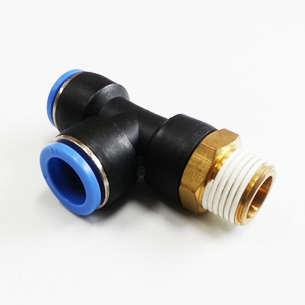
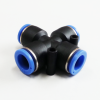
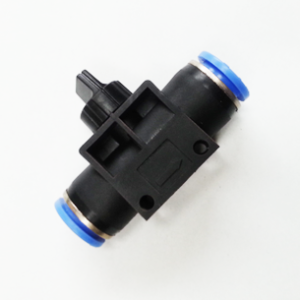
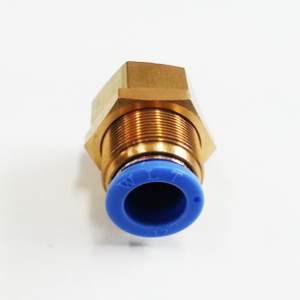
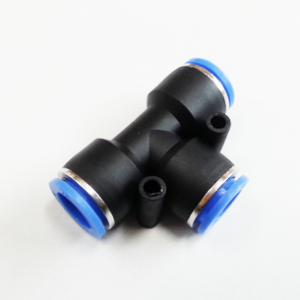
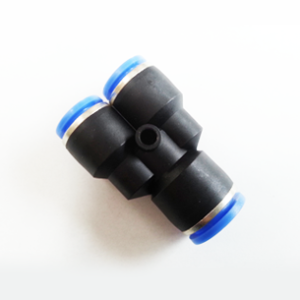
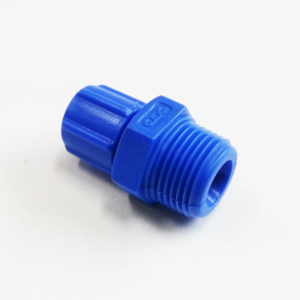
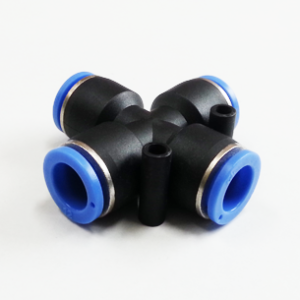
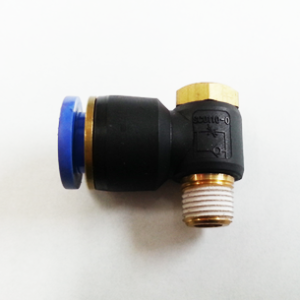
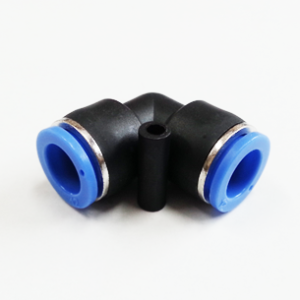
Reviews
There are no reviews yet.